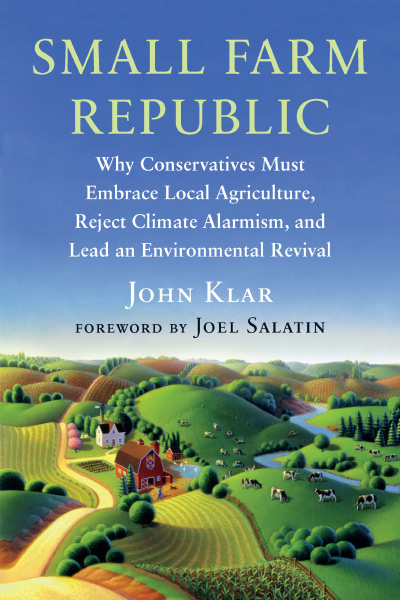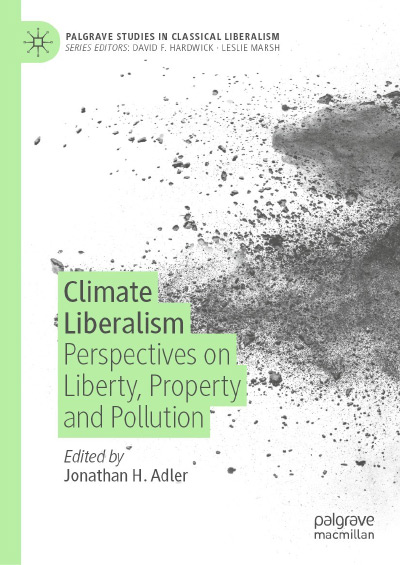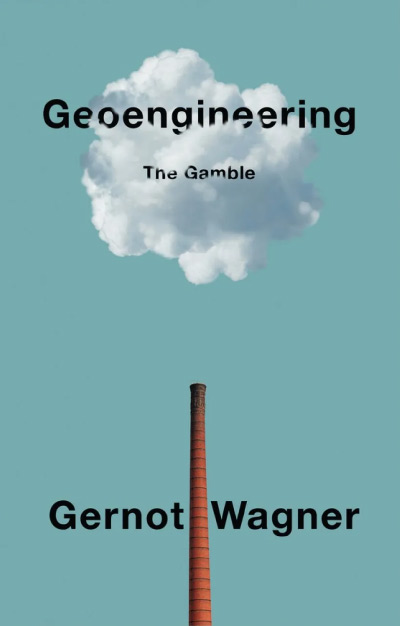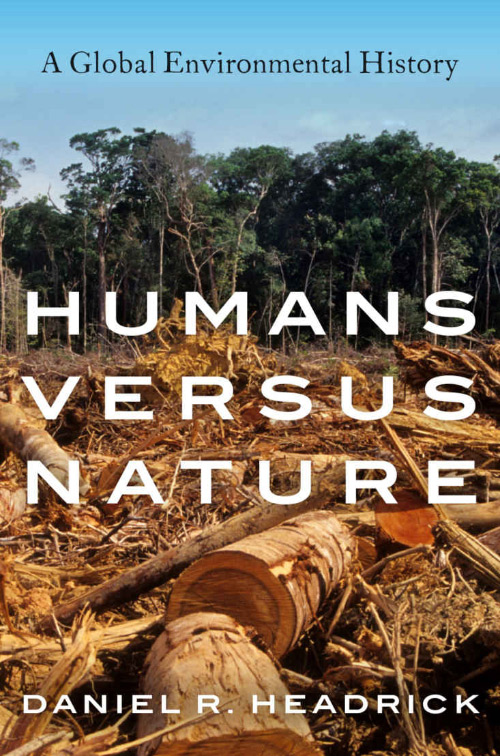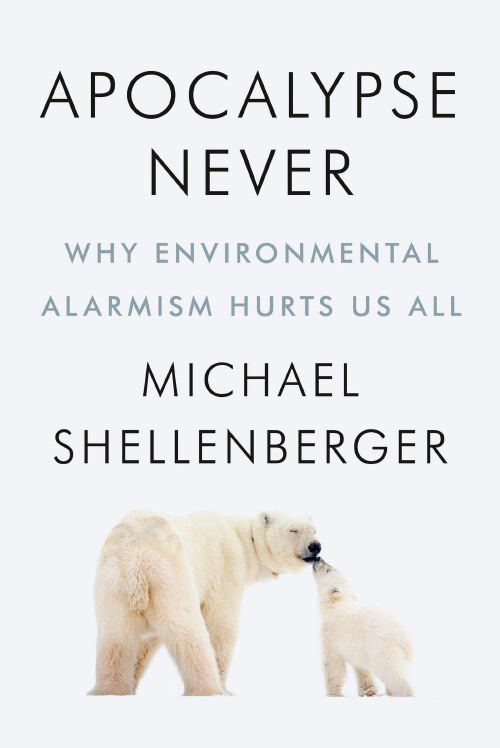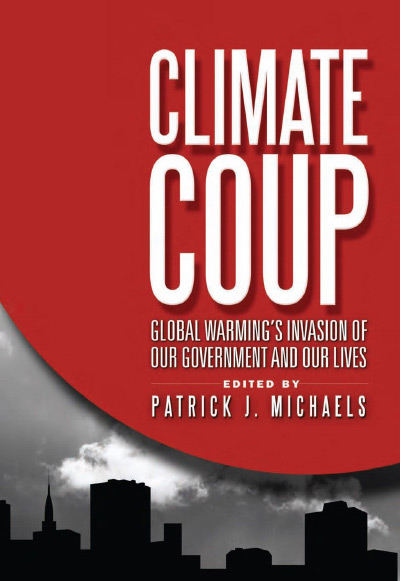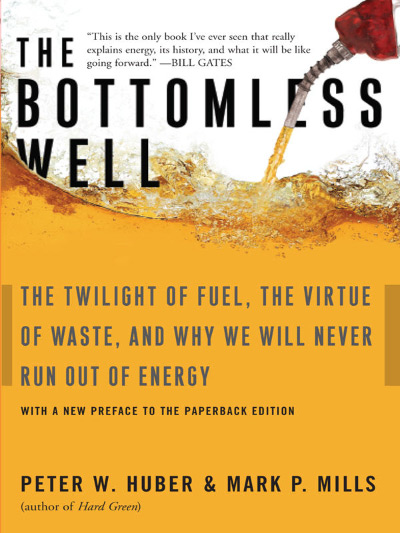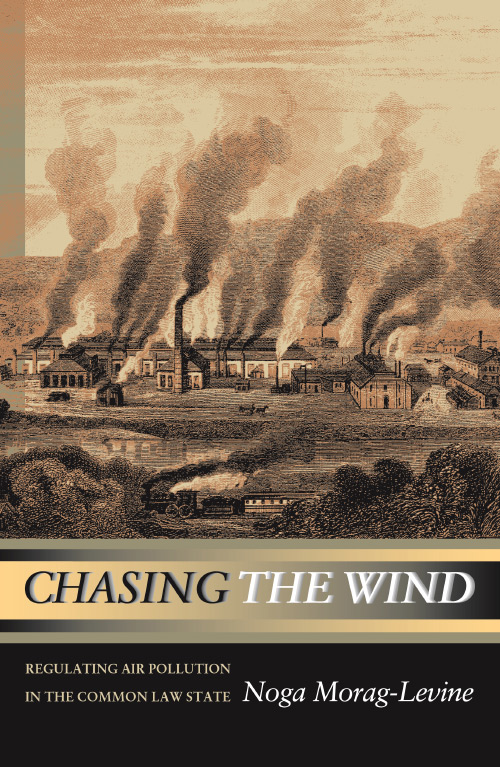By most metrics, the plastic industry has been very successful. Worldwide production of plastic polymers rose from 2 million metric tons in 1950 to 380 million metric tons in 2015. (That’s about 114 pounds per person per year globally.) Consumers demand this product because, as Sarah Morath notes, plastic’s “widespread availability, versatility, and low cost has made it the ‘workhorse material’ of the modern economy. Plastic reduces food waste by increasing shelf life and its lightweight nature reduces fuel consumption for transporting goods” (p. 110). When plastic came on the market, it “freed manufacturers from the need to use more expensive and scarce materials such as glass, metal, wood, and ivory” (p. 17), and it often outperforms these materials on many margins. Demand for plastic is so high that “14 percent of oil and 8 percent of gas is used for the manufacture of petrochemicals, the essential feedstock for plastic production” (p. 20).
However, there is a problem with plastics: pollution. As Morath tells it, this pollution is largely the work of a subset of consumers and producers (especially in the fishing industry) who improperly dispose of their plastic bottles, wrappers, nets, and other plastic products—fouling the land and especially the seas. A 2015 study in Environmental Science estimates that over 90 percent of seabirds have plastic in their stomachs. The press has extensively reported deaths of whales associated with plastic ingestion—including a sperm whale with 115 drinking cups, 4 plastic bottles, 25 plastic bags, and 2 flip-flops in its stomach. The Great Pacific Garbage Patch is estimated to contain nearly 2 trillion pieces of plastic (about 90 percent of them microplastics that are less than 5 millimeters in length) weighing nearly 80,000 metric tons. Morath also cites a study that “found that humans are ingesting around 5 g [grams] of plastic—the equivalent of a credit card—a week...although the science surrounding the associated harms is less settled” (p. 47). (Actually, this study, recently published in the Journal of Hazardous Materials, estimates “that globally on average, humans may ingest 0.1–5 g of microplastics weekly through various exposure pathways,” so 5 grams is at the very top of the estimated range and the figures on the Great Pacific Garbage Patch (GPGP)—which is roughly three times the size of France—work out to about 286 pounds per square mile or 7.1 ounces per acre. Surprisingly low. One of Morath’s sources indicates that fishing nets comprise the vast majority (86%) of the GPGP (p. 152).) Probably far more alarming is the problem of phthalates, used to soften plastics and make them more durable, which are known hormone (endocrine)-disrupting chemicals. “Studies have linked phthalates...to reduced testosterone and fertility in laboratory animals, and prenatal exposure to lower testosterone in males” (p. 49). Unfortunately, Morath spends a single paragraph on this danger. This oversight is very odd because there is growing concern about declining levels in sperm counts. “Temporal Trends in Sperm Count: A Systematic Review and Meta-Regression Analysis” (Levine et al., 2017) was the 26th most cited scientific paper in 2017. There are good reasons to link plastics to this sperm count decline—about 50 percent in the past four decades—and to believe that “endocrine-disrupting chemicals (EDCs) are playing havoc with the building blocks of sexual and reproductive development” in humans and other species around the world (see Shanna H. Swan, with Stacey Colino, 2020, Count Down: How Our Modern World Is Threatening Sperm Counts, Altering Male and Female Reproductive Development, and Imperiling the Future of the Human Race, New York: Scribner, p. 9). (For tips on how to avoid ingesting phthalates, see this link. One key is to avoid using plastics in your microwave oven, as they leach out at high temperatures.)
What should we do about plastic pollution? Morath embraces the four Rs: “refuse, reduce, reuse, recycle” (p. 152) and surveys a wide range of laws and initiatives meant to reduce plastic consumption and plastic waste. For example, one might “refuse” to use plastic water bottles and use a durable container or drink from a fountain, instead; or “reduce” by buying products with less plastic packaging. Our Plastic Problem cites an estimate from Science Advancesthat of the 6.3 billion metric tons of plastic waste ever generated only 9 percent of plastic has been recycled, while 12 percent has been incinerated, and 79 percent “accumulates in landfills or in the natural environment” (p. 20–21, although later it reports that the “amount of plastic that is recycled...is only 2 percent globally,” p. 172).
“Disposal by sending something to a landfill is the least preferred, but most common, strategy with respect to used plastic” (p. 172, emphasis added), asserts Morath. I strongly disagree with this conclusion, as will most economists. Much of my used plastic, I think, deserves to end up in a landfill. For example, the cottage cheese container that I finished at breakfast yesterday would need to be washed before it is useful for recycling and it is made out of polypropylene, which is RIC (resin identification code) 5, which is not very useful to recyclers. This goes for virtually all plastic wrapping material and other plastic products like the used up mechanical pencil I threw away earlier this week. The tuna that I had for lunch came in a little plastic pouch, which I threw away. Why didn’t I buy tuna in a metal can, instead of a plastic pouch? Because the plastic option was a better deal—likely because the resource cost of plastic is much lower than metal. Part of the advantage is that plastic is easier to open—and there’s no risk of getting cut.
All in all, recycling is very resource (especially labor) intensive, and some economists have argued that the costs outweigh the benefits of virtually all household plastic recycling. The point is that one must weigh these costs versus benefits for every single plastic item that is used up, so making a blanket statement that “landfill is the least preferred” strategy is a non-starter. Landfills in the U.S. have a good track record of cheaply and effectively containing such waste material. Thomas Kinnaman (2006, “Examining the Justification for Residential Recycling,” Journal of Economic Perspectives 20, Fall, no. 4: 222) demonstrates that curbside recycling universally costs more than sending materials directly to the dump, so that the primary justification for the programs is that the very act of recycling “provides utility to participating households.” It is something that “parents and children feel good about, and for this reason households may be willing to pay for the mere opportunity to recycle” rather than its tangible benefits. This effectively means that if you don’t gain utility from the act of recycling, it’s better to toss the item in the garbage can. (See also, Daniel Benjamin, “Recycling Myths Revisited” (PERC Policy Series, No. 47, 2010).)
However, the recycle versus landfill debate is a bit off topic when it comes to our plastic problem, since neither of these are the primary sources of plastic pollution. The pollution Morath highlights arises mainly when end users don’t recycle or throw their waste in the trash can but throw it into the street or into nature. This is especially likely to arise in developing countries where people don’t have the benefit of weekly trash pickup. Morath reports that “90 percent of the global input of plastic into the ocean comes from ten river systems—two in Africa and eight in Asia” (p. 29). The rivers are (in order) the Yangtze (over half the total by itself), Indus, Yellow, Hai, Nile, Ganges, Pearl, Amur, Niger, and Mekong (see this global map for more details), so I suspect that continued economic development will eventually reduce this problem as nations along these rivers become wealthy enough to adopt the kind of waste disposal systems we have in the United States and Europe. Other measures of pollution in China—the location of half these rivers—have fallen substantially, so it is likely this type of pollution will follow the trend.
This is not to deny that there is a plastic pollution problem in the United States. There certainly is. The bad news is that Keep America Beautiful’s 2020 National Litter Study estimates that there are nearly 50 billion pieces of litter along U.S roadways and waterways—that’s 152 pieces of litter for every U.S. resident and well over 2000 pieces of litter per mile (88 percent of it less than four inches in size). The good news is that Keep America Beautiful estimates that roadway pollution fell 54 percent from 2009 to 2020, largely because the number of cigarette butts (mainly made of plastic fibers) fell 69 percent! Perhaps surprisingly, overall plastic pollution (excluding cigarette butts) fell about 17 percent, with plastic soft-drink bottles down 64 percent, but there were strong rises in wine and liquor bottles, juice bottles, sports drink bottles, and water bottles (along with an 88 percent increase in aluminum beer bottles). It is unknown how the spread of COVID in 2020 affected these numbers.
I have observed a somewhat different trend. When I walk to and from work, I pick up all the bottles and cans that I see. In May 2012 I began entering these daily numbers into a spreadsheet. From then until the end of the 2012, I picked up 2.48 plastic bottles per weekday. For the corresponding period in 2021, I picked up 3.18 bottles a day—a 28 percent increase. (Who knew that these numbers would come in handy!?) I also go on walks far from campus and my (fairly clean) neighborhood on weekends and have observed a very clear trend, which you have probably noticed too. The poorer the neighborhood, the more trash of all sorts there is on the streets and in people’s yards.
But this brings us back to what to do about our plastic pollution problem. Morath reports on a range of laws and community efforts. Many states and cities have banned plastic straws at restaurants, unless customers request them. Others have bans on foam containers. Ten states have adopted bottle deposit bills—and the survey by Keep America Beautiful shows that bottle litter is about 50 percent lower in these states, although the amount of other types of litter in these states is about 30 percent lower as well. Some places have enacted taxes or bans on the plastic grocery bags. Ireland’s 15-euro cents tax led to a 94 percent drop in bag pollution within just a few weeks. Are these policies a good idea? Again, that would require a systematic comparison of marginal costs and marginal benefits, and Morath’s sources aren’t up to the task. For example, bottle deposit laws drive up the initial purchase price, but many people don’t get the money back because it is not worth their time—and the money gained from returning bottles must be weighed against the substantial time (and hassle) costs imposed on users. This is probably why their use hasn’t spread. People are willing to put up with a little extra pollution because there are costs to dealing with it. In poorer neighborhoods residents are implicitly saying that they just don’t care very much (although I do because I pick up bottles and cans there too)—the marginal benefit of picking up trash from their own yards just isn’t very high to them, as their own actions demonstrate.
There are, of course, laws against littering—but enforcing them is another question. As she is a law professor, Morath generally thinks about laws, but it’s worth thinking about every margin—and she includes interesting information about non-governmental organizations’ efforts to deal with our plastic problem (mainly by getting laws passed, but also by digging in and cleaning up). However, she says very little about the ultimate cure for plastic pollution—reducing the marginal benefit that individual litterers (whose trash washes from roadways into rivers and oceans) get from littering. The Keep American Beautiful survey found that cigarette butt pollution fell a whooping 69 percent from 2009 to 2020. This is much larger than the 30 percent drop in cigarette purchases from 2009 to 2019. This decrease in pollution wasn’t because of increased fines or the actions of an NGO, but mainly because it has become increasingly unfashionable to flick cigarette butts into the street, similar to the change in attitudes about cleaning up pet waste. Keep American Beautiful also reports a 58 percent reduction in plastic bag litter, even though anti-bag policies cover a small fraction of the country. Perhaps this is why anti-bag policies haven’t spread much—the problem is disappearing on its own. Why? Our Plastic Problem doesn’t answer this question, and the answer may be far beyond the reach of scholars studying this issue.
All in all, Our Plastic Problem is a thought-provoking book, which raises many important questions, and surveys a wide range of literatures but has some blind spots—especially regarding the need for carefully weighing costs versus benefits when adopting any policy, such as recycling. This suggests that the four Rs should be five Rs: refuse, reduce, reuse, recycle, receptacle (i.e., throw most of your plastic waste away, because recycling’s marginal benefits usually don’t outweigh its marginal costs). Some might even add a sixth R: refuse, reduce, reuse, recycle, receptacle, rejoice. Rejoice because plastics have been a blessing in so many ways. I am hesitant to add the sixth R, because of concerns about plastics’ endocrine-disrupting effects. However, the upsides of plastics shouldn’t be downplayed. Morath sometimes portrays plastic pollution as a “crisis” (p. 171), and it may be in some places, although many readers will disagree. However, crisis breeds Leviathan. Imagine the state considering the problem to be so significant that it, for example, requires that every bottle have a unique code on it which is scanned at the time of purchase and requiring that all purchases be made with payments identifying the buyer (such as a credit card). Then each bottle found in the gutter or floating in a stream could be traced back to the buyer. That should reduce plastic pollution! But would it be worth the price?
| Other Independent Review articles by Robert M. Whaples | ||
| Spring 2025 | Millennials, Gen Zs, Capitalism, Socialism, and Confusion | |
| Spring 2025 | Not Stolen: The Truth about European Colonialism in the New World | |
| Spring 2025 | Green Breakdown: The Coming Renewable Energy Failure | |
| [View All (106)] | ||




